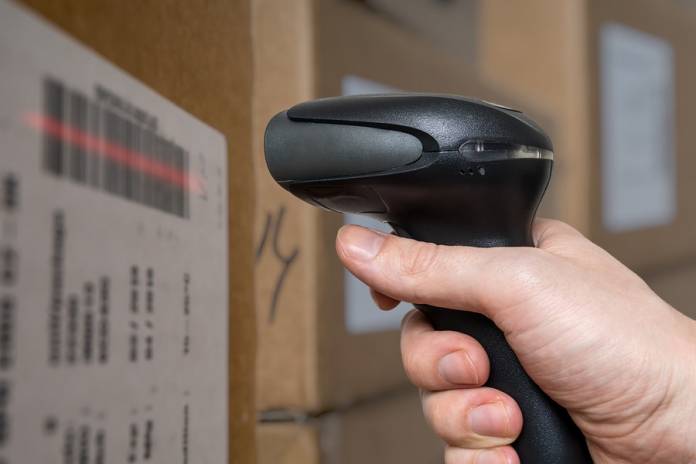
Ultimately when thinking about a barcode in South Africa or worldwide for that matter, the first thought that pops into our minds is retail stores, such as Checkers, Woolworths and Pick n Pay, and the food objects that are sold in these stores, but barcodes are defined as so much more than just for use in retail stores. How can that be possible you ask? Let me give you some in-depth information on what a barcode contains and its purpose in today’s world.
A bar code is a representation of data, which can be read by a machine called a bar code scanner. A vast amount of information can be recorded on the codes relating to the objects they describe, by using a sequence of bars and spaces vertically aligned. The bars and spaces represent numbers and or symbols.
A barcode number is read by a scanner using a laser beam that picks up on the reflections of the bar’s, the scanner then converts the reflected light into data on the computer for action or to be stored in records. The scanner also looks for a start and stop code, the start code will let the scanner know that it can start scanning and the stop code will indicate the end of the barcode number. Quite amazing you may be thinking as if the code and scanner are sharing thoughts or a conversation and relaying the information onto the computer for us as humans to process. But wait there is more, barcodes can even allow for the computer to record the time of sale, exactly what is being sold in store, the price of the product item, all the relevant information needed by the store within a second or a ‘beep’ of the scanner.
In today’s world, we get 1, 2 and 3D bar codes. 1D bar codes are the simpler of the three and are only able to store text information, whereas 2D has a bit more leeway with what can be loaded onto the bar codes and can include much more information, an image could even be included if desired. 3D however has only been around for a few years, although they do use the same principle as 1D and 2D, they are portrayed as an image. This was created as a more permanent option to manufacturers that we’re unable to use barcode labels due to the elements that they were faced with in their industries such as scorching temperatures, therefore they would be engraved or applied to the actual product at the same time as the manufacturing process. On a 3D bar-code, the image is read by a device by reading the height of the lines and the barcode can then be transferred into data.
The most commonly used one’s today are the UPC barcode (Universal Product Code) and EAN barcode (European article number), both known as Global Trade Item Numbers (GTIN). The UPC code was the first to ever be invented in 1974. UPC is a 12-digit barcode number and EAN is a 13 digit, they are very similar. They are both point of sale bar codes, used mainly at the point of sale system in retail outlets. The first two or three digits of a barcode determine the country of origin of the barcode, such as 600 for South African barcodes and 070 for United States barcodes, thereafter will be 9 or 10 data digits, containing product or organization information and lastly a check digit, which is a calculation used to ascertain the number is correct for the scanner.
We all know that human error is inevitable, and barcodes eliminate the chances of this happening.
You may also have heard the term stock take or inventory? This is when stores have a specific time period when they will need to count and record every single item in their store and compare it to the records on their database to ensure accuracy, prevent stock loss and see high and low selling items. Now imagine having to go through a store such as Makro and manually count and record each stock item? It is a task that seems almost humanly impossible and leaves drastic room for error, bar codes have eliminated that entirely and now each item is able to be scanned by its assigned product code and all the information will feed directly into the database and we can let the computer and scanner do the job for us. This has evolved the world of retail and business in a great way.
Codes can be used in so many means, forms and industries, although the main and most discussed use of barcodes will remain retail outlets. Barcoding can even be used on assets in large corporate companies to keep track of all the office equipment if needed, along with managing the tracking of fleet vehicles in freight and courier companies. Their use is expanding at an accelerating rate and becoming a trend. Soon they will be used for all the most innovative ideas, inventions, and creations, worldwide, from the biggest to smallest organizations, it can only keep growing from here.










